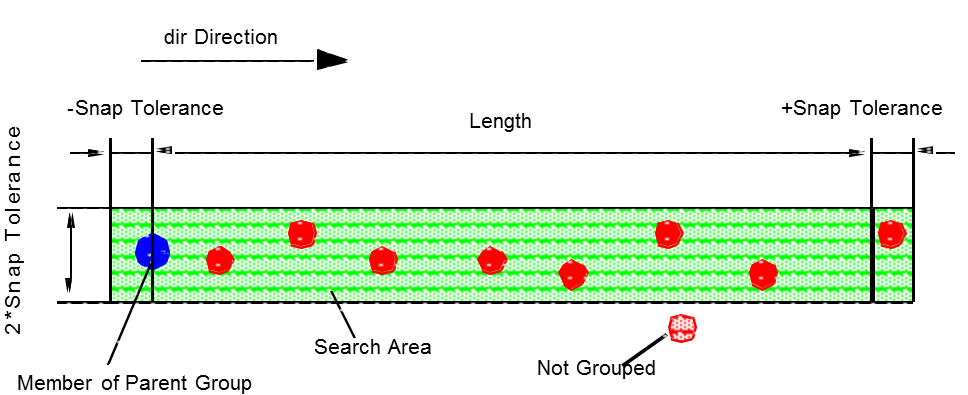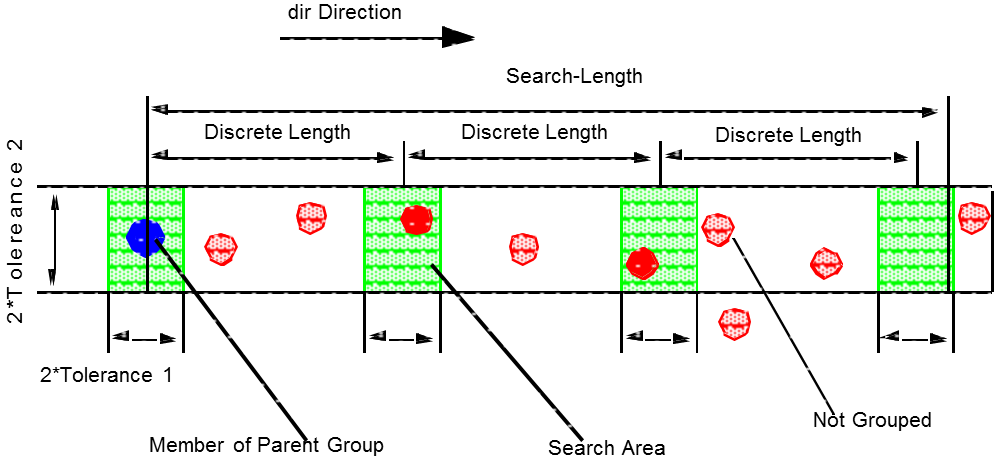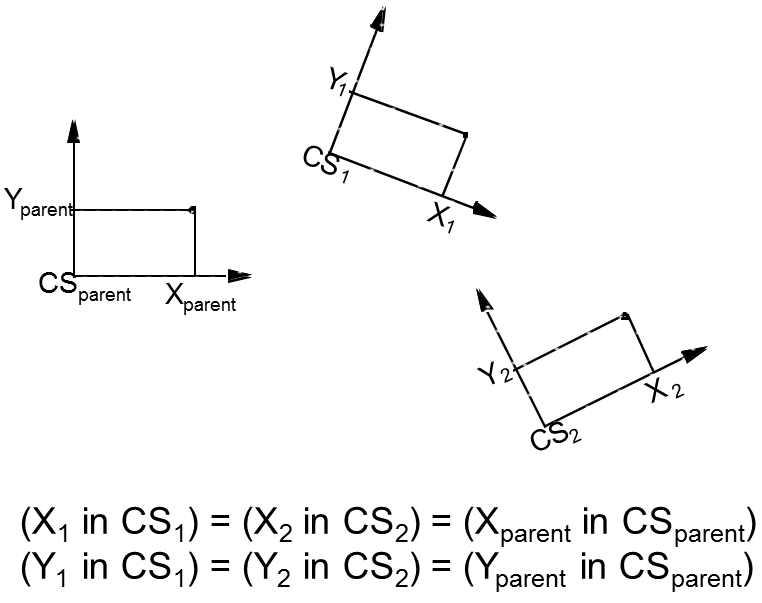Automatic Node Group Definition (GROUP_AUTO_DEF) | |||||||
|
| ||||||
This feature is especially important in relation to function-based node coupling. For example, if the rotation symmetry of a shaft shoulder loaded with a bending moment should be maintained during optimization, it is necessary to couple all nodes of the circumference. This involves a large number of node groups and node couplings.
Starting with a parent group that has been previously defined by the
user, the GROUP_AUTO_DEF command can be used to automatically
define child groups (children). Employing various methods, search areas
are established originating at every node of the parent group. All nodes
located within a search area are “captured” and collected in a child
group. Thereby, only those nodes that are currently in the selection
list NODES are considered. Per default, all nodes are
selected at the beginning. (Thus, if no SELECT command
is activated, all existing nodes are considered. You can "preselect"
a certain area using SELECT to restrict automatic group
definition to this area, see
Selection of Objects in Tosca Structure.gui
).
Child groups are labeled with the name of the parent group and a numerical index. For example, if child groups are formed from a node group titled “parent” which contains 4 nodes, the four children groups are named “parent_1”, “parent_2”, “parent_3” and “parent_4”. Various procedures can be used to define a search area.
- Specification of a continuous search area (
SEARCH_TYPE = CONTINUOUS): All nodes located within the search area that are currently selected by the node selection list are assembled and assigned to a child group: -
GROUP_AUTO_DEF ND_GROUP = parent_group ... SEARCH_TYPE = CONTINUOUS .... END_
This is also shown in the following figure:

- Specification of a search area divided into discrete sections (
SEARCH_TYPE = DISCRETE): All nodes located within the discrete sections that are currently selected by the node selection list are assembled in child groups: -
GROUP_AUTO_DEF ND_GROUP = parent_group ... SEARCH_TYPE = DISCRETE .... END_
This is also shown in the following figure:

- Search in various local coordinate systems (
SEARCH_TYPE = CS_MULTI): The coordinates of the individual nodes in the parent group are determined in relation to a specified coordinate system. All selected nodes with matching coordinates in relation to the specified search coordinate system are assembled in child groups together with the corresponding parent node: -
GROUP_AUTO_DEF ND_GROUP = parent_group ... SEARCH_TYPE = CS_MULTI .... END_
The following figure shows the definition of multiple coordinate systems:

Remarks
- Only currently active (selected) nodes are considered for the definition
of children groups when using
GROUP_AUTO_DEF. Per default, all nodes are selected at the beginning of the optimization. If - for specific reasons - only a subset of nodes was active (selected) and if now all nodes should be considered for the children group definition, then all nodes must be activated (again) usingSELECT, NODE, ALL before theGROUP_AUTO_DEFcommand is executed (see also Selection of Objects in Tosca Structure.gui ).